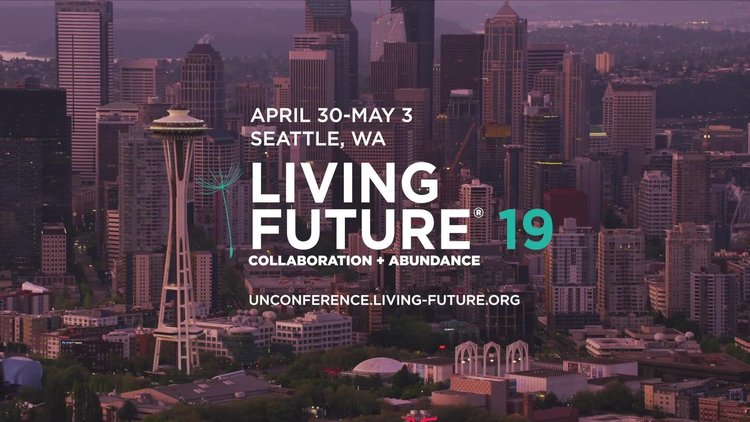This Spring I was given the opportunity to attend the Living Future Unconference in Seattle, WA. Living Future is the first conference I have been to and I arrived with an open mind and few expectations. Now, reflecting on my experience, two thoughts stand out:
First, I’ve become aware of how important the R.W. Kern Center is to a large group of people. When I first encountered the R.W. Kern Center I was struck by the steps the building is making towards a regenerative built environment. But I saw the RWKC as more of a symbol than a legitimate contributor to our ecosystem. That changed at Living Future. I realize that the RWKC is truly a living experiment, not only paving the way for future living buildings, but also normalizing and improving upon cutting edge regenerative technology. A large (albeit niche) community of people are using the R.W. Kern Center’s progress to make progress of their own, whether through inspiration, or through the plethora of knowledge we’ve gained in the process of constructing and using our living building.
Second, I am left with the thought of the perfect and the good. It feels like the International Living Future Institute (ILFI) is obsessed with the pursuit of the perfect. Frequently, ILFI publishes a new, updated Living Building Challenge (LBC). In fact, at Living Future 2019, they released the LBC 4.0, the first version having been released only 13 years earlier in 2006. This pursuit of perfect was reinforced at Living Future 2019. Each of the seminars and workshops I attended were focused on continuing to improve an aspect of the LBC, whether it be rainwater collection, greywater treatment, construction site safety, etc. While I was excited by each session, I was repeatedly struck by a seeming contradiction between this strive for perfection and the self-awareness that the LBC is not the only future of sustainable or regenerative development. I was concerned by the prospect that as the LBC is developed and refined, achievement of the Challenge may become more exclusive, less accessible, and more expensive.
Continuing this train of thought, I realize that when Living Future strives for perfect it makes good more attainable. For example, many living buildings are trying to make treated rainwater align with the public health regulations for drinking water in the United States. As these living buildings (one of which is the R.W. Kern Center) approach this goal, rainwater treatment systems may someday be able to be implemented in any new building. Reflecting on Living Future, I realize that the International Living Future Institute is not only pursuing the goals of LBC, LCC, LPC (…), they are working to make regenerative infrastructure feasible throughout the United States.
Oliver Silberstein,
RWKC Intern


